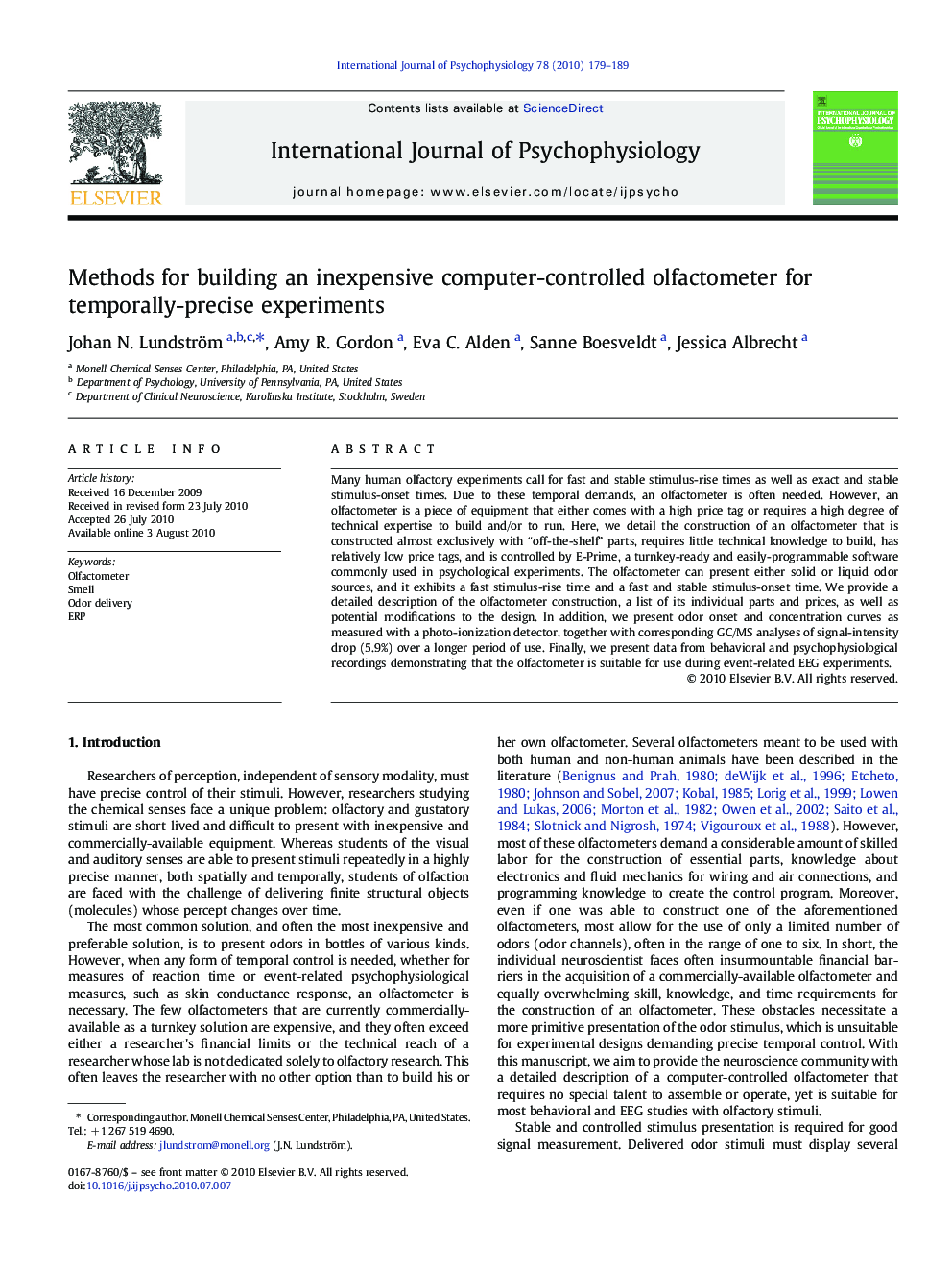| Article ID | Journal | Published Year | Pages | File Type |
|---|---|---|---|---|
| 931461 | International Journal of Psychophysiology | 2010 | 11 Pages |
Many human olfactory experiments call for fast and stable stimulus-rise times as well as exact and stable stimulus-onset times. Due to these temporal demands, an olfactometer is often needed. However, an olfactometer is a piece of equipment that either comes with a high price tag or requires a high degree of technical expertise to build and/or to run. Here, we detail the construction of an olfactometer that is constructed almost exclusively with “off-the-shelf” parts, requires little technical knowledge to build, has relatively low price tags, and is controlled by E-Prime, a turnkey-ready and easily-programmable software commonly used in psychological experiments. The olfactometer can present either solid or liquid odor sources, and it exhibits a fast stimulus-rise time and a fast and stable stimulus-onset time. We provide a detailed description of the olfactometer construction, a list of its individual parts and prices, as well as potential modifications to the design. In addition, we present odor onset and concentration curves as measured with a photo-ionization detector, together with corresponding GC/MS analyses of signal-intensity drop (5.9%) over a longer period of use. Finally, we present data from behavioral and psychophysiological recordings demonstrating that the olfactometer is suitable for use during event-related EEG experiments.
Research Highlights►Many olfactory experiments demand fast and stable stimulus delivery. ►For this, an olfactometer is needed. ►Commercially available olfactometers are expensive and complicated. ►We are here providing a detailed description of an inexpensive, fast, and simple olfactometer.
